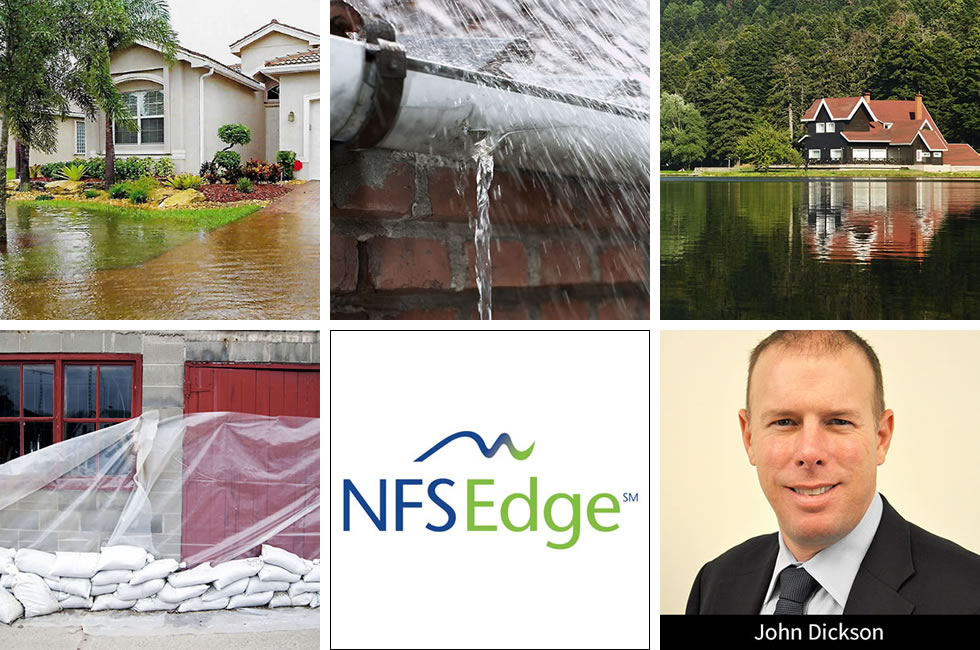
In 2017, almost 200,000 California residents were evacuated when the Oroville dam almost failed. Residents were allowed to return home, but the risk of having homes and businesses flooded – and lives lost – remains high.
Residents in other parts of the country have to contend with flooding too, from hurricanes such as Sandy, Katrina, Ike, and Andrew, to name just a few. Anyone living in Tampa/St. Petersburg, Miami, New Orleans, Norfolk/Virginia Beach, Va., and Houston/Galveston, Texas, should be up to date with their insurance coverage and evacuation plan since they reside in the most vulnerable U.S. hurricane-prone cities, according to Climate Controls.
Whether it’s a dam giving way, or a historic storm, or simply a serious problem with a neighborhood drainage issue that causes water to backup in your home – you have an opportunity to obtain flood insurance now – before a disaster occurs.
It’s critical that anyone living in a single-family residence or multifamily dwelling – owner or renter – understand the danger of flooding and prepare in advance since weather conditions can change indiscriminately and endanger homeowners and their possessions. Federal insurance (FEMA) and Private flood insurance coverage is available, but whatever course you take, be aware of the questions to ask and find out what’s involved. John Dickson, president of NFS Edge Insurance Agency, which oversees delivery of private flood insurance options, offers seven guidelines:
It’s not all about weather but changes in typography and structures, too. Mother Nature may be a major cause of foods, but humans also wreak havoc in both urban and suburban areas. For example, researchers have found that replacing native switch grass in the Houston area with more manicured traditional lawns significantly limits the ability of that land area to absorb water and respond to flood waters. It’s better to stay with what’s native, and also install proper drainage systems as areas are developed.
Know the flood history in your area. People often ask about noise, crime or a number of other concerns when considering where to purchase or rent, but you may want to add flood research to that list. Ask evacuation authorities or county land use offices if your prospective residence has previously flooded. You may also want to research if the area’s municipal sewer systems are adequate. New construction areas should fare better in the face of flooding as most current building techniques and codes for water retention and water/runoff have vastly improved from years past. If a municipality has previously experienced flooding, current codes should require new homes to be elevated. These are considerations that could make the difference in your home and personal belongings remaining safe and dry if flooding occurs.
Be prepared to protect your property and finances. In advance of flooding, evaluate flood-readiness from two perspectives: 1) property readiness, and 2) financial resources. If you live in a flood area, you have an advance opportunity to mitigate the risk of flood damage by moving valuables to higher ground, to an attic area, or upper floor of a 2-story residence.
When it comes to financial readiness, the most effective strategy involves buying adequate insurance for peace of mind. Generally, homeowners’ insurance policies don’t cover losses caused by flooding. In high-risk flood areas, defined as Special Flood Hazard Areas, homeowners are required to purchase coverage through a National Flood Insurance Program (NFIP) if the property is secured by a federally-backed mortgage. But other homeowners may still want to buy flood coverage just in case weather changes, or a dam breaks like the recent occurrence in California.
The degree of difficulty associated with obtaining flood insurance varies by source. While the process to obtain NFIP flood insurance can be complicated, many private flood insurance programs offer more streamlined solutions. Properties may be rejected as the NFIP does not accept properties in non-participating communities and some private programs may exclude properties that are recognized as severe repetitive loss structures. Other private programs may only offer insurance in certain geographic locations.
Because the peril of flooding presents a broad spectrum of possibilities, the cost of flood insurance can range from just a few hundred dollars a year to thousands of dollars, depending on the size and value of the home. Premiums for commercial properties can also be higher. Private flood insurance may be as little as half the cost of federal flood insurance for certain properties, but similarly, there are properties where federal flood insurance may be the better solution. Homeowners should review all available flood insurance options and work with an insurance agent that’s familiar with flood coverage. Many states also maintain a consumer advocacy office in their insurance departments, which can provide additional assistance. Take a look at the risk of being in flood area according to FEMA‘s map.
Detail your belongings in advance. Generally, there’s very little time to plan for a flood. Flash floods or major storms hit without significant warning. It’s best to avert future problems by having a detailed inventory of your personal property via video or photos, and an updated appraisal list which is kept in a safe deposit box or flood-proof safe.
Evacuate: ready, set, go. Check with local authorities and neighbors to understand the specifics applicable to your community. In the event an evacuation is ordered, your priority is to protect lives, so know how to get out of your home fast and where shelters are located. You might even practice the route in advance. You should also have an emergency pack ready while you wait for evacuation notices. It should contain a first aid kit, sunscreen, water or water purification tablets, flashlights, spare batteries, etc. The American Red Cross website makes helpful suggestions and even offers supplies. Later, pay attention regarding when you can safely return.
Detail damage afterward. If your property is flooded, take pictures to document losses and immediately contact your insurer to start the remediation and recovery process.
Dot all i’s and cross all t’s. Again, if you live in a known flood-prone area, make sure you understand all options. When it comes to a claim, know that federal law regulating flood insurance dictates a rigid one-year statue of limitations and sets caps on dollars offered. Filing your claim isn’t just a matter of being timely, it requires good documentation. You can read up on this topic at www.floodtools.com.
NFS Edge Insurance Agency, Inc. is a subsidiary of Aon National Flood Services (NFS), the largest processor serving insurance companies participating in the NFIP. NFS Edge offers a suite of private flood products: EZ Flood Standard®, EZ Flood Preferred®, FloodWrap® and Excess Flood. To learn more, please visit www.nfsedgeinsurance.com.
